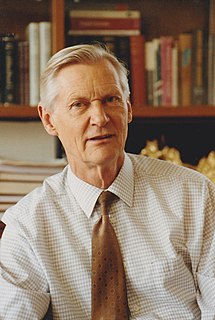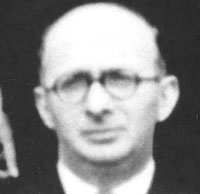Related Research Articles

Dacrydium cupressinum, commonly known as rimu, is a large evergreen coniferous tree endemic to the forests of New Zealand. It is a member of the southern conifer group, the podocarps. The former name "red pine" has fallen out of common use.
Diterpenes are a class of chemical compounds composed of four isoprene units, often with the molecular formula C20H32. They are biosynthesized by plants, animals and fungi via the HMG-CoA reductase pathway, with geranylgeranyl pyrophosphate being a primary intermediate. Diterpenes form the basis for biologically important compounds such as retinol, retinal, and phytol. They are known to be antimicrobial and antiinflammatory.

Carminic acid (C22H20O13) is a red glucosidal hydroxyanthrapurin that occurs naturally in some scale insects, such as the cochineal, Armenian cochineal, and Polish cochineal. The insects produce the acid as a deterrent to predators. An aluminum salt of carminic acid is the coloring agent in carmine, a pigment. Natives of Peru had been producing cochineal dyes for textiles since at least 700 CE. Synonyms are C.I. 75470 and C.I. Natural Red 4.
An isocyanide is an organic compound with the functional group -N≡C. It is the isomer of the related nitrile (-C≡N), hence the prefix is isocyano. The organic fragment is connected to the isocyanide group through the nitrogen atom, not via the carbon. They are used as building blocks for the synthesis of other compounds.

Lake Matheson is a small glacial lake in South Westland, New Zealand, near the township of Fox Glacier. It was a traditional food-gathering place for local Māori. An easy walking track circles the lake, which is famous for its reflected views of Aoraki / Mount Cook and Mount Tasman.

A fenestrane in organic chemistry is a type of chemical compound with a central quaternary carbon atom which serves as a common vertex for four fused carbocycles. They can be regarded as spiro compounds twice over. Because of their inherent strain and instability, fenestranes are of theoretical interest to chemists. The name—proposed in 1972 by Vlasios Georgian and Martin Saltzman—is derived from the Latin word for window, fenestra. Georgian had intended that "fenestrane" solely referred to [4.4.4.4]fenestrane, whose skeletal structure looks like windows, and Kenneth B. Wiberg called that specific structure "windowpane". The term fenestrane has since become generalized to refer to the whole class of molecules that have various other ring-sizes. Georgian recommended rosettane for the class, based on the structural appearance as a rosette of flowers.
Lewis Norman Mander,, FAA, FRS was a New Zealand-born Australian organic chemist. He has widely explored the synthesis and chemistry of the gibberellin class of diterpenes over a 20-year period at the Australian National University (ANU). In particular, he studied the effect of these hormones on stem growth and on the reasons why plant undergo bolting during plant development. The July 2004 edition of the Australian Journal of Chemistry was dedicated to Mander on the occasion of his 65th birthday. He retired in 2002 but remained active at the ANU until 2014. In 2018 Mander was made a Companion in the General Division in the Order of Australia which "...is awarded for eminent achievement and merit of the highest degree in service to Australia or humanity at large". In an interview he gave after winning his award, Mander said that his goal was to improve the efficiency of extracting food from plants with the possibility of reducing food shortages in the future.

Sir Alan Rushton Battersby was an English organic chemist best known for his work to define the chemical intermediates in the biosynthetic pathway to vitamin B12 and the reaction mechanisms of the enzymes involved. His research group was also notable for its synthesis of radiolabelled precursors to study alkaloid biosynthesis and the stereochemistry of enzymic reactions. He won numerous awards including the Royal Medal in 1984 and the Copley Medal in 2000. He was knighted in the 1992 New Year Honours. Battersby died in February 2018 at the age of 92.

Labdane is a natural bicyclic diterpene. It forms the structural core for a wide variety of natural products collectively known as labdanes or labdane diterpenes. The labdanes were so named because the first members of the class were originally obtained from labdanum, a resin derived from the gum rockrose.
In chemical nomenclature, a preferred IUPAC name (PIN) is a unique name, assigned to a chemical substance and preferred among the possible names generated by IUPAC nomenclature. The "preferred IUPAC nomenclature" provides a set of rules for choosing between multiple possibilities in situations where it is important to decide on a unique name. It is intended for use in legal and regulatory situations.
Warren Richard Roper FRS FRSNZ FNZIC is a New Zealand chemist and Emeritus Professor at the University of Auckland.
Geoffrey Edward Coates was an English organometallic chemist and academic. He developed the basics for new materials in plastics, semiconductors and pharmaceuticals.

Arthur Israel Vogel was a British chemist known for his Chemistry textbooks. He became the head of the chemistry department at Woolwich Polytechnic at the age of 27.

Arthur Smithells, CMG FRS was a British chemist. Born in Bury, Lancashire, on 24 May 1860. His father James Smithells, was a railway manager. He was educated at University of Glasgow, then spent time under Roscoe and Schorlemmer at Owens College, Manchester. He gained his B.Sc. from the University of London, then took supplemental courses at Munich and, with Robert Bunsen, at Heidelberg University. In 1883 he was appointed assistant lecturer at Owens College, and two years later succeeded Professor Sir Edward Thorpe as Professor of Chemistry in Yorkshire College, Leeds, which was subsequently incorporated as the University of Leeds. Smithells went on to hold the position of Pro-Vice-Chancellor at Leeds, which he held until he retired from the Chair then becoming Emeritus Professor in 1923. During his career he was Honorary Educational Adviser on Home Science and Household Economics to King's College London, President of the Society of British Gas Industries (1911).
Sasanka Chandra Bhattacharyya (1918–2013) was an Indian natural product chemist and the director of Bose Institute, Kolkata. He was known for his studies on structures and configurations of terpenoids and synthesis of Vetiver Oil and natural musk. He was the vice-president of the Indian National Science Academy and was an elected fellow of the academy as well as the Indian Academy of Sciences. The Council of Scientific and Industrial Research, the apex agency of the Government of India for scientific research, awarded him the Shanti Swarup Bhatnagar Prize for Science and Technology, one of the highest Indian science awards, in 1962, for his contributions to chemical sciences.

Laurenene is a diterpene natural product with an unusual [5.5.5.7]fenestrane structure. It was first discovered in extracts from the New Zealand tree species Dacrydium cupressinum by researchers at the University of Otago. It has since been found in other species of New Zealand trees, such as Podocarpus totara.
Penelope Jane Brothers is a New Zealand chemistry academic. She is currently Director of the Research School of Chemistry at the Australian National University, specializing in inorganic chemistry.

Sally Anne Brooker is a New Zealand inorganic chemist. She has been a full professor at the University of Otago since 2006.
Peter Jonathan Rutledge is a New Zealand chemist and professor at the School of Chemistry, University of Sydney. His research has focused on drug development for tuberculosis, antibiotics, and metal sensing. He has engaged in some research activity on catalysis.

Penta-2,3-dienedioic acid, is in allene-containing dicarboxylic acid. It was the first allene to be synthesized, in 1887, but the structure of it was thought to be a propyne core instead of an allene. The correct structural isomeric identity was not determined until 1954.
References
- ↑ "Death search: registration number 2018/3699". Births, deaths & marriages online. Department of Internal Affairs. Retrieved 13 February 2018.
- ↑ "NZ university graduates 1870–1961: Co–Cu". Shadows of Time. Retrieved 13 February 2018.
- 1 2 3 4 5 "Professor Edward Corbett". Royal Society of New Zealand. Retrieved 13 February 2018.
- ↑ "Catalogue search". British Library. Retrieved 13 February 2018.
- ↑ "England & Wales, civil registration marriage index, 1916–2005" . Ancestry.com Operations. 2010. Retrieved 13 February 2018.
- 1 2 "Professor Robert Edward (Ted) Corbett death notice". New Zealand Herald. 6 February 2018. Retrieved 13 February 2018.
- 1 2 "Corbett, Enid Mary". SunLive. 16 August 2012. Retrieved 13 February 2018.
- 1 2 3 4 "Emeritus professors". University of Otago Calendar (PDF). Dunedin: University of Otago. 2017. p. 121. Retrieved 13 February 2018.
- ↑ "Robert E. Corbett". Otago University Research Heritage. University of Otago. Retrieved 13 February 2018.
- ↑ Perry, Nigel (24 September 2007). "Rimu leaves". Te Ara – the Encyclopedia of New Zealand. Ministry for Culture and Heritage. Retrieved 13 February 2018.
- ↑ "History of chemistry adorns site hoardings". University of Otago. 1 December 2015. Retrieved 13 February 2018.
- ↑ Gibb, John (15 February 2018). "Chemical bling shows the way". Otago Daily Times. Retrieved 15 February 2018.
- ↑ "List of all Fellows with surnames A–C". Royal Society of New Zealand. Retrieved 13 February 2018.